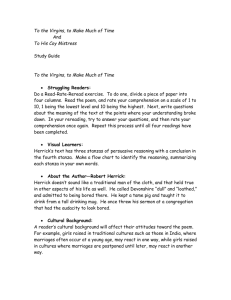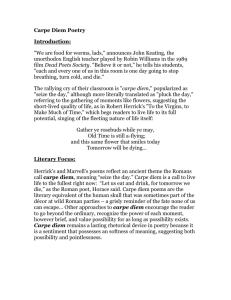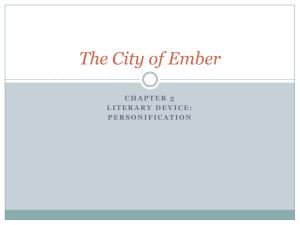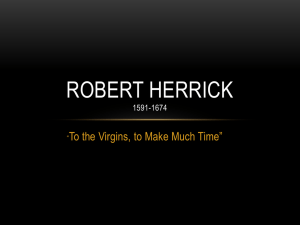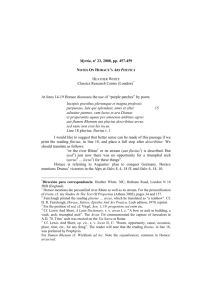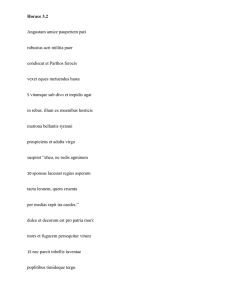Carpe Diem Essay
advertisement
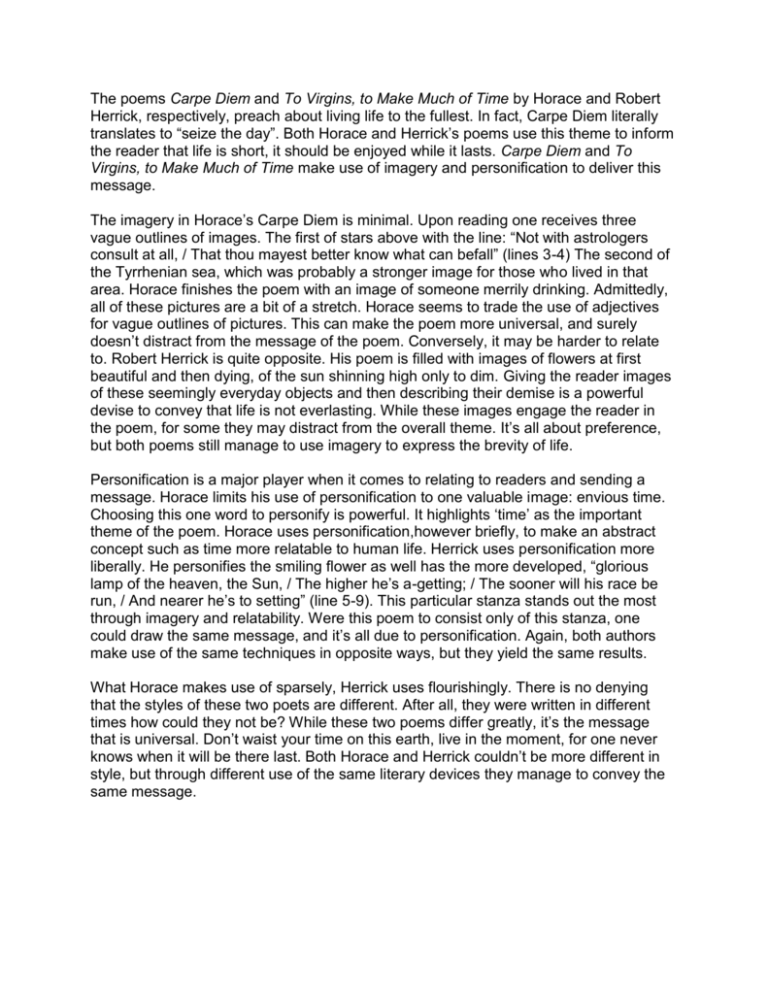
The poems Carpe Diem and To Virgins, to Make Much of Time by Horace and Robert Herrick, respectively, preach about living life to the fullest. In fact, Carpe Diem literally translates to “seize the day”. Both Horace and Herrick’s poems use this theme to inform the reader that life is short, it should be enjoyed while it lasts. Carpe Diem and To Virgins, to Make Much of Time make use of imagery and personification to deliver this message. The imagery in Horace’s Carpe Diem is minimal. Upon reading one receives three vague outlines of images. The first of stars above with the line: “Not with astrologers consult at all, / That thou mayest better know what can befall” (lines 3-4) The second of the Tyrrhenian sea, which was probably a stronger image for those who lived in that area. Horace finishes the poem with an image of someone merrily drinking. Admittedly, all of these pictures are a bit of a stretch. Horace seems to trade the use of adjectives for vague outlines of pictures. This can make the poem more universal, and surely doesn’t distract from the message of the poem. Conversely, it may be harder to relate to. Robert Herrick is quite opposite. His poem is filled with images of flowers at first beautiful and then dying, of the sun shinning high only to dim. Giving the reader images of these seemingly everyday objects and then describing their demise is a powerful devise to convey that life is not everlasting. While these images engage the reader in the poem, for some they may distract from the overall theme. It’s all about preference, but both poems still manage to use imagery to express the brevity of life. Personification is a major player when it comes to relating to readers and sending a message. Horace limits his use of personification to one valuable image: envious time. Choosing this one word to personify is powerful. It highlights ‘time’ as the important theme of the poem. Horace uses personification,however briefly, to make an abstract concept such as time more relatable to human life. Herrick uses personification more liberally. He personifies the smiling flower as well has the more developed, “glorious lamp of the heaven, the Sun, / The higher he’s a-getting; / The sooner will his race be run, / And nearer he’s to setting” (line 5-9). This particular stanza stands out the most through imagery and relatability. Were this poem to consist only of this stanza, one could draw the same message, and it’s all due to personification. Again, both authors make use of the same techniques in opposite ways, but they yield the same results. What Horace makes use of sparsely, Herrick uses flourishingly. There is no denying that the styles of these two poets are different. After all, they were written in different times how could they not be? While these two poems differ greatly, it’s the message that is universal. Don’t waist your time on this earth, live in the moment, for one never knows when it will be there last. Both Horace and Herrick couldn’t be more different in style, but through different use of the same literary devices they manage to convey the same message.

